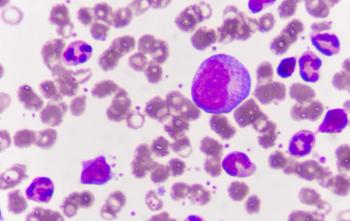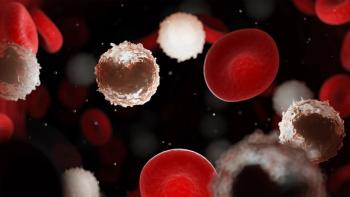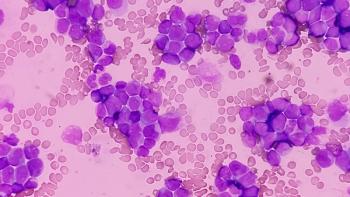
Navigating Fertility Preservation Options for Patients Undergoing Cancer Treatment

Although oncology nurses do not relay the initial information around impacted fertility with cancer treatment, they play an important role in guiding patients with any concerns around this topic.
As cancer treatment can affect fertility in both men and women, oncology nurses and advanced practice providers play a crucial role in educating patients about fertility presentation options, if they are interested.
Elina Melik-Levine, ARNP, of the Oncofertility Program at the Miami Cancer Institute, part of Baptist Health South Florida, talked with Oncology Nursing News about how oncology nurses should ensure that patients are aware of the fertility risks and preservation options available, even though the decision to pursue fertility preservation lies with the patient themselves.
How can cancer treatments impact fertility in both men and women?
While we know that most modalities to treat cancer have the potential to impact fertility, it is very difficult to predict the degree to which fertility will be impacted in the long term. The most common anticancer modalities include chemotherapy, radiation therapy, and hormone therapy.
For male patients, we worry that cancer treatment could impact fertility in the following ways: interrupt normal sperm production, change the way that sperm is transported out of the body, or disrupt hormones that are required for reproduction.
For females, we worry that cancer treatment could change the way that eggs are developed at the DNA level. Cancer treatment could potentially induce an early state of menopause or impact the ability to safely carry a pregnancy.
Since the degree of infertility cannot be predicted with certainty for any patient, we educate all patients with the same lasting message; we inform him/her that any kind of cancer treatment presents a risk to infertility, but the degree and extent of long-term infertility is not clear. Based on this information, it is our job as clinicians to further educate the patient there are things that patients can do to preserve fertility, if they're interested.
What options are available to preserve fertility before and after treatment for cancer?
The key to fertility preservation is that the preservation measure happens before cancer treatment is commenced. For example, even 1 dose of chemotherapy can impact fertility.
For males, the standard for fertility preservation is a procedure called sperm banking, or sperm cryopreservation. This is a procedure where a man gives a sample of sperm to a fertility doctor or sperm bank. That center then takes that sperm, freezes it under very cold conditions, and sends it away to a third-party storage facility. Once frozen, samples can be stored indefinitely until the patient is ready to use it to build a family.
For females, fertility preservation with egg or embryo freezing is the standard method, and this is performed by a reproductive endocrinologist (RE). After a panel of blood work is completed and analyzed by the RE, the process of ovarian stimulation and egg retrieval could be initiated. During the process of ovarian stimulation, a female performs daily hormone injections, during which she will be monitored by frequent blood test and ultrasounds. Once the RE determines that the eggs have reached maturity, she would undergo the process of egg retrieval, followed by freezing of the mature eggs. Patients with a male partner or sperm donor also have the option of an embryo at the time of egg retrieval. The mature egg would be fertilized with sperm, and the resulting embryo will be frozen.
Fertility preservation may not be the right choice for all patients. While receiving cancer treatment, and for at least 1 to 2 years post-treatment, we educate patients that conceptions should be avoided. However, at the discretion of the patient’s oncologist, we tell our patients that it is safe to attempt conception after 1 to 2 years. If the patient has trouble with conception, we refer him/her to an RE for a workup to understand the status of their fertility. Based on the results of the workup, the doctor then guides the patient on best methods of conception or family building.
What role do nurses play in educating patients on fertility preservation options?
Nurses play a big role in identifying the patients that have an interest in this topic and helping him/her see a reproductive specialist as soon as possible so that their options are maximized. If the patient expresses concern about fertility, or says that they would like a more education on the topic of fertility preservation, it's a nurse’s job to inform the primary oncologist, or in the case of the Miami Cancer Institute, refer the patient to the Oncofertility program for formal education. During this consultation, the oncofertility APP reviews the patient’s specific oncology plan of care as established by the oncology team and discusses all risks to fertility that plan may pose. The APP then begins to educate the patient on the fertility preservation options that are appropriate for the patient. All oncofertility consultations are tailored to the patient’s specific age and gender.
How should oncology nurses approach this topic to patients initially?
Ideally, patients that are interested in fertility preservation are identified and referred to the Oncofertility program at Miami Cancer Institute as early as possible in the process of their diagnosis in order to maximize options. However, it is appropriate to discuss fertility at any point in the patient’s cancer journey. There are opportunities for the nurse to identify fertility preservation candidates at many points in their treatment, and it is within the nurse’s scope to send a referral to Oncofertility program for formal fertility education.
Additionally, the Oncofertility Program at Miami Cancer Institute is an initiative lead by nurse practitioners. The APP calls patients referred to the Oncofertility Program to offer an educational consultation about his/her specific cancer treatment and how it can impact future fertility.
How should oncology nurses start these conversations with patients who are either on the fence about having children or know they don’t want to have children? How do you balance not pushing patients while knowing that this is a time-sensitive topic?
Discussions regarding fertility are always a sensitive matter. We address this topic as delicately as possible because not every patient has the same perception of the future. The Oncofertility program at Miami Cancer Institute is an optional service for patients to simply understand the impact his/her treatment will have on fertility. Some patients are very young and have not yet considered family planning before, and others are willing to do anything in their control to assure that they are able to have children in the future. Regardless of a patient’s choice to preserve fertility or not, it is important for patients to have all the necessary knowledge to make an informed decision about raising a family post-cancer care.
Once a patient is well informed about how cancer therapy can impact fertility and what his/her options are for fertility preservation, the option to purse fertility preservation is completely optional. However, since fertility preservation must be performed prior to the start of cancer treatment and could take several days to weeks, it is important to educate patients that they must make a decision regarding fertility preservation as soon as possible in an effort to avoid delays in cancer-related care. A decision to pursue fertility preservation is a very personal one and is based on many factors. Ultimately, the entire oncology team is supportive of the choice that the patient decides upon.
This transcription has been edited for clarity and conciseness.
Newsletter
Knowledge is power. Don’t miss the most recent breakthroughs in cancer care.
















































































